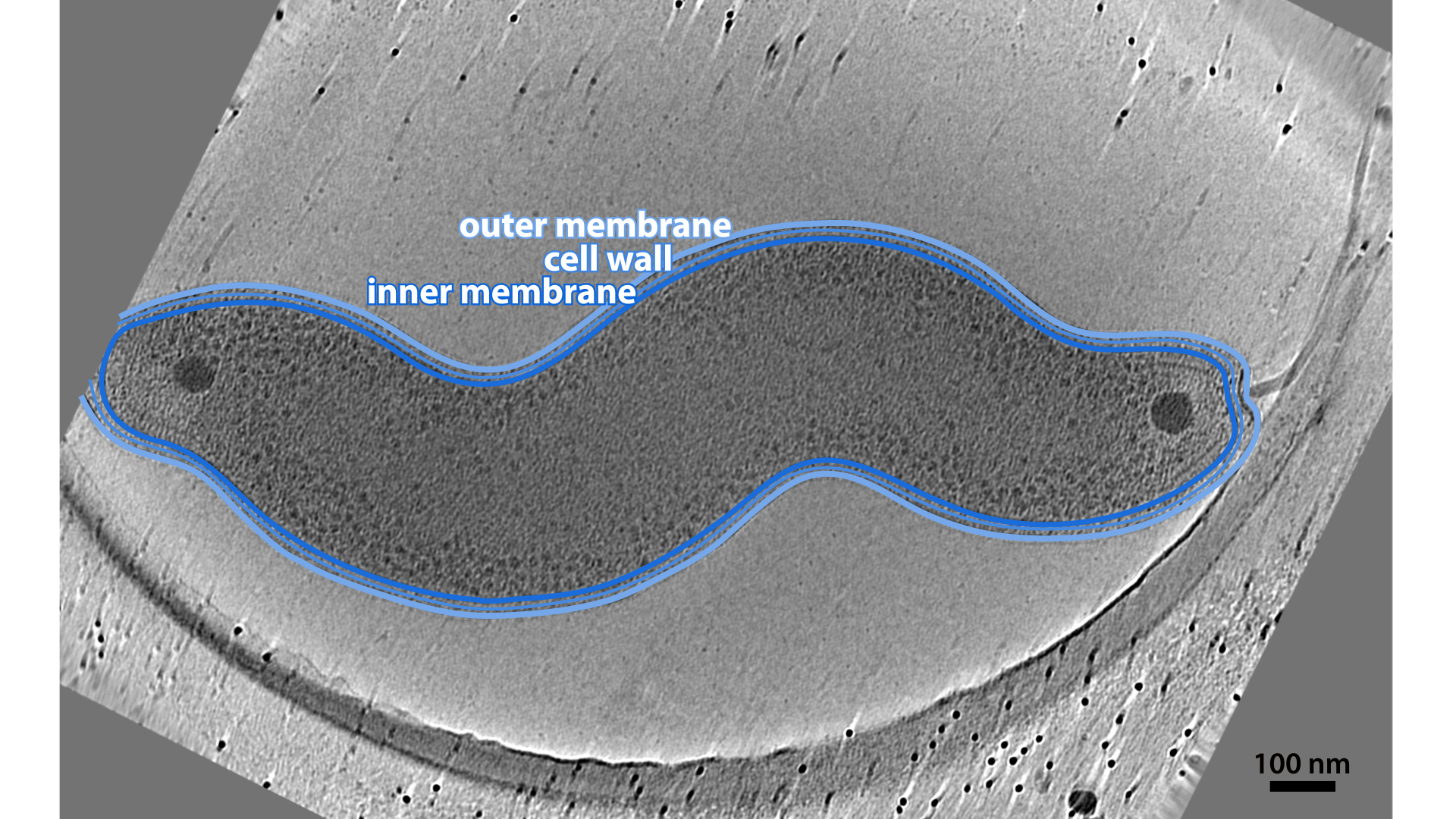Spirochete bacteria like this Borrelia burgdorferi use the long filaments of their motility machinery (flagella, discussed in Chapter 6) as a kind of cytoskeleton. A bundle of flagella wraps around the cell in the periplasm, between the cell wall and the outer membrane. Spun by motors at their base (more on that in Chapter 6), the filaments impart a wave pattern to the growing cell wall. Without the motors’ rotation, the cells develop a rod shape. The Spirochete phylum gets its name from this feature of spiral “hair” (the hair being the flagella). Note that B. burgdorferi are not helical like some other spirochetes, but rather adopt a two-dimensional waveform like that of a snake.




